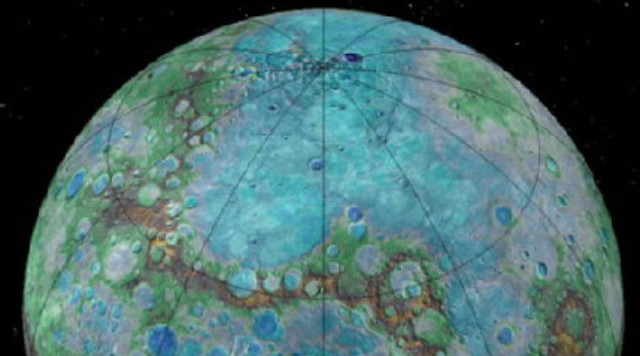Detects a hot alien planet, about the same size as the Earth
A group of international astronomers have discovered a hot planet, many of the metals and sizes like Earth outside our solar system have a density of materials like Mercury. David Armstrong of the University of Warwick, England said: "Mercury is more prominent than the other planets of the solar system, has a thick iron surface and shows it to be formed in a different way."
Armstrong said: "We were surprised to see this exoplanet has the same high density of materials, which means that Mercury-like planets are not as rare as we thought. Named K2-229b, this planet is 20% larger than Earth but has a mass greater than 2.6 times and a daytime temperature of more than 2000 degrees Celsius ".
 Detects a hot alien planet, about the same size as the Earth Picture 1
Detects a hot alien planet, about the same size as the Earth Picture 1
Located about 340 million light-years from Earth, it is almost like its host star (about 1% of the distance between the Earth and the Sun), which itself is the medium-sized K star shape active in Constellation Virgo Constellation.
According to research published in the journal Nature Astronomy, K2-229b revolves around a round of fourteen hours. "What's interesting is that K2-229b is also the planet inside a system with at least three planets'.
Many such discoveries will help us discover the formation of these unusual planets, as well as Mercury itself, "Armstrong added. With the K2, Armstrong telescope and colleagues used it carefully. Doppler spectroscopy - also known as "oscillatory exploration method" to discover and characterize this distant planet.
The dense metal nature on the surface of K2-229b has a lot of potential origins and a hypothesis that its atmosphere may have been eroded by wind and ultraviolet rays when the planet formed near. Its master star. Another possibility is that K2-229b was formed after a tremendous influence between two giant bodies in the universe billions of years ago collided with each other like the theory that the moon was formed after the earth colliding with objects of the size of Mars.
You should read it
- How hot is the planet of Mercury?
- How far is the distance from Earth to Mercury?
- Learn about the secret of Mercury formation
- See Earth through the eyes of a Mercury-bound spacecraft saying goodbye to home
- How the Sun will look when viewed from other planets
- Some lucky Earthlings should be able to see a Mercury-bound spacecraft fly by our planet in April
- Decipher the mystery of the origin of billions of tons of ice that exists on Mercury
- The interesting fact about the universe is not quite the same as what we thought
- How big is the solar system?
- The discovery of the 'Second Earth' can exist only 4.2 light-years away from Earth
- Deadly detection: Thunderstorms bring mercury to Earth
- History of Earth formation and 25 milestones (Part I)
May be interested

7 alien planet is more exotic than science fiction movies

This is a photograph of the first black hole of mankind, located in a galaxy 55 million light-years from Earth

Hell planet has snow even though the temperature is over 2,750 degrees Celsius

Discovered 20 Earth-like planets that could contain life

PSR B1620-26b - What's the oldest planet on the top of the 'elders' in the universe?

The streams of plasma sprayed from black holes can kill anything






 Discover the strange green planet HD 189733b outside the solar system
Discover the strange green planet HD 189733b outside the solar system Earth's Moon Revived Recently?
Earth's Moon Revived Recently? The discovery of the 'Second Earth' can exist only 4.2 light-years away from Earth
The discovery of the 'Second Earth' can exist only 4.2 light-years away from Earth Discovered evidence that 'Solar System 2.0' has water
Discovered evidence that 'Solar System 2.0' has water For the first time, toxic gas has been discovered that confuses astronomers
For the first time, toxic gas has been discovered that confuses astronomers Discovering two 'super-Earths' only 12 light-years away can hide life
Discovering two 'super-Earths' only 12 light-years away can hide life